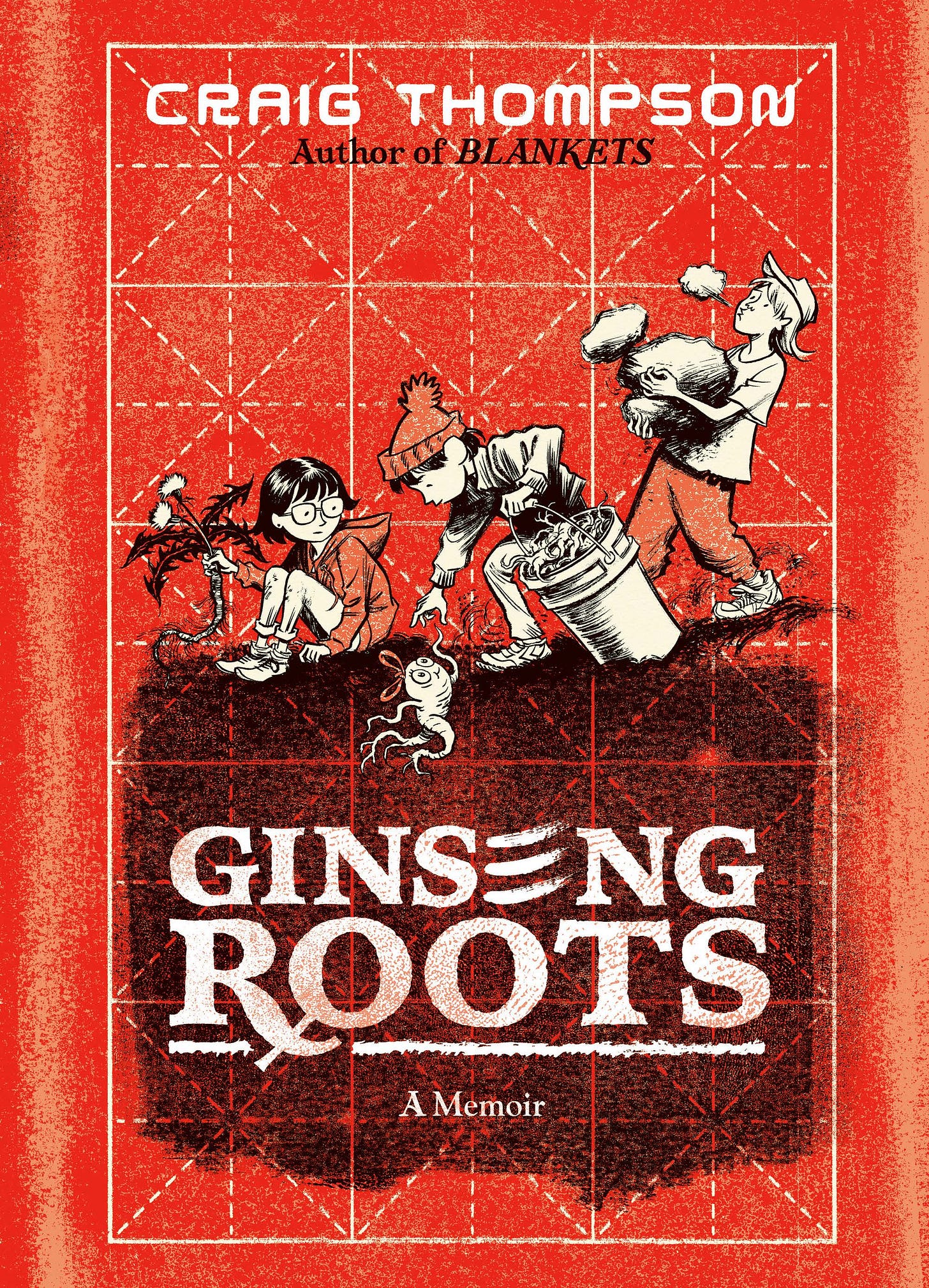Craig Thompson digs into history for 'Ginseng Roots'
Part memoir, part journalism from author of 'Blankets' hits stores this week
A documentary of a medicinal Chinese root intertwines with the story of the author’s youth in rural Wisconsin in “Ginseng Roots.”
The story further explores “the trade relationship between China and the U.S., class divide, child labor, immigration, corporate agriculture, environmentalism, plant-based healing, and holistic healing for the global economy,” Thompson said in an interview conducted for Comic Shop News. The graphic novel was released this week, following 12 issues released in comic-book form. Check out my full Q&A with Thompson below.
Matthew Price: How would you describe the book to a potentially interested reader?
Craig Thompson: Ginseng Roots is half memoir about my childhood laboring on ginseng farms in rural Wisconsin and expands to a documentary of this medicinal Chinese root; exploring the trade relationship between China and the US, class divide, child labor, immigration, corporate agriculture, environmentalism, plant-based healing, and holistic healing for the global economy.
MP: Tell me about the decision to release Ginseng Roots first serially and how that impacted your artistic and storytelling choices.
CT: Serialization was foremost about avoiding the long isolation of working on a graphic novel for 4-8 years. But perhaps more importantly, I wanted to override mid-career slump and creative block by connecting with the form of comics that imprinted on me as a child – the pamphlet comic book. It’s the first time in my 25-year career that I was able to work in that format. Obviously, it allowed me to get books out more frequently, sometimes four issues a year, sometimes only one. It increased the density of my storytelling and layouts because I had to contain each chapter in 32 pages and couldn’t spread out in an unlimited page count.
MP: What were some of the main changes made in taking the series to the new collected format?
CT: Each issue stood on its own, self-contained. But when read as a whole, they were missing some sort of connecting thread / narrative arc. I added 70 narrative pages to the final book, and most of that was about my ongoing health crisis and the rapid degeneration of my drawing hand that actually started with an injury in China, lead to numerous treatments - included radiation - and culminated with Chinese Medicine treatments and ingesting ginseng.
MP: I read that for the red, white and black color palette, that in part you were inspired by the color of the ginseng blooms and the callback to Chinese calligraphy. Can you tell me about that?
CT: Broadly, that black, white and red color palette is borrowed from Chinese woodblock printing and watercolor artists like Lu Yanshao and Li Keran. But more than anything I looked at Hokusai’s ten volume encyclopedia “Manga” (the origin of that term) from the 1800s that prints his drawings in black, gray, and a cadmium orange tone. Red is the color of Maoist propaganda art. And, of course, red radiates the crimson berries of the ginseng plant which erupt in late summer / early fall.
MP: We often run a sidebar column at Comic Shop News called "Bedside Reading" talking about what creators and others are currently reading in comics and otherwise -- what's on your nightstand, whether literally or not. So let me ask -- what are you reading?
CT: Comic-wise, I just re-read Tom Hart’s heartbreaking Rosalie Lightning, originally published by St. Martin’s Press in 2016 and soon-to-be re-released by Street Noise Books. Prose-wise, I’m reading Patti Smith’s M Train about her relationship with late-husband Fred “Sonic” Smith. Both transcendent memoirs about loss and grief.
MP: Is there anything else you’d like to tell me about?
CT: Ginseng Roots might be a memoir like Blankets, but it owes more to comics journalism à la Joe Sacco. Every line of the book was recorded via interviews with almost 80 people, meticulously transcribed, and vetted for edits and approval with the interviewees.
Matthew Price, matthew@matthewLprice.com, has written about the comics industry for more than two decades. He is the co-owner of Speeding Bullet Comics in Norman, Oklahoma.




